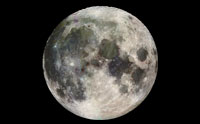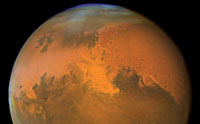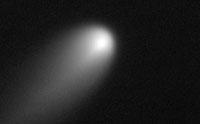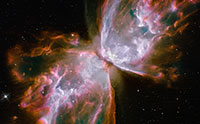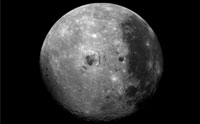The Higgs boson particle, discovered a year ago at the Large Hadron Collider (LHC) has reminded physicists of an uncomfortable truth. …read more Read more here: AIG Daily
Is there water in moon rocks? There shouldn’t be, according to secular accounts of the moon’s origins. But decades after Apollo missions returned to Earth with moon rocks, scientists at The Open University in the UK have reported that minerals in these rocks hold water remnants. Could this support the biblical account of moon origins? More… …read more Read more here: icr.org
How old is the moon? Here are five uniformitarian ‘measures’, that by any measure, expose the contradictions in the billions of years lunar ‘dating’ …read more Read more here: creation.com
Despite its supposed proof of the big bang, the cosmic microwave background has been a source of challenges to the standard cosmology. …read more Read more here: AIG Daily
Many creationists are attracted to plasma astronomy, the idea that electromagnetic effects rather than gravity are responsible for much of the structure of the universe. Dr. Faulkner examines the claims of one proponent, Donald Scott. …read more Read more here: AIG Daily
Beautifully belching jets hailed as stellar birth announcement. …read more Read more here: AIG Daily
Presumably an extraterrestrial object struck Mars and “launched” rock fragments into space, and those fragments became Martian meteorites and eventually arrived here on Earth. More… …read more Read more here: icr.org
The cratering pattern on the asteroid Vesta presents a ‘dating’ conundrum. …read more Read more here: creation.com
Danny R. Faulkner, AiG–U.S., lays groundwork for the beginning of a new solution to the light travel time problem. …read more Read more here: AIG Daily
Unexpected features of the Cosmic Background Radiation are hard to explain in a big bang framework. …read more Read more here: creation.com
The latest astronomical reports bring no joy, only increased bewilderment, to scientists who presume the Earth and its moon are billions of years old. …read more Read more here: creation.com
Modern astronomy allows us to find the distances, sizes, temperatures, and masses of stars. This is incredible, given how far stars are from us. …read more Read more here: AIG Daily
Sometime in its past, the earth’s moon was pounded with thousands upon thousands of meteors. Is it possible to reconstruct the sequence of these strikes, shedding light on the Bible’s teaching about the moon’s creation? …read more Read more here: AIG Daily
The development of a creation model of astronomy has lagged development of creation models in biology and geology. …read more Read more here: AIG Daily
The very clear teaching of the Genesis account is that the creation took six literal days. What are creation-based alternatives to the big bang? …read more Read more here: AIG Daily
Up close Ison would appear to be a hulking block of rock and ice, but it is just a tiny pixel compared to the scale of the Solar System. More… …read more Read more here: icr.org
Not so young after all? …read more Read more here: creation.com
NASA news seems to contradict the secular claim of planet formation by the slow and gradual accretion of debris. More… …read more Read more here: icr.org
What are the alternatives to the big bang, and how pervasive is the belief in the big bang? …read more Read more here: AIG Daily
By Creation Moments According to evolution, some explanation for the sun, stars and planets must be found which does not include God as Creator. read more …read more Read more here: Creation Moments
As we look at the foundations of the ‘billions of years’ historical framework, are the foundations rock or sand? …read more Read more here: creation.com
In this chapter we shall explore some of the difficulties that modern cosmology and the big bang have. …read more Read more here: AIG Daily
Some recent creationists have attempted to address the light travel time problem indirectly with an implied appeal to a small universe. …read more Read more here: AIG Daily
Secular scientists face a grave challenge in reconciling the moon's magnetic signatures with billion-year age assignments. More… …read more Read more here: icr.org
Just as all ideas have consequences, incorrect ideas can have very bad, or even dangerous, results. …read more Read more here: AIG Daily
Since the 1970s many exciting things have been happening in cosmology. This article is a discussion of various cosmological ideas. Read more here: AIG Daily
Danny R. Faulkner, AiG–U.S., examines the Dodwell hypothesis, that the earth underwent a catastrophic impact in 2345 BC that altered its axial tilt and then gradually recovered by about 1850. Read more here: AIG Daily

















![At the Cross [Live] At the Cross [Live]](http://img.youtube.com/vi/NeBNnupt3P8/0.jpg)
